A first aid kit can be essential to have on hand, especially if someone gets injured while you are hiking in the wild, in your car, or away from home.
What exactly is a first aid kit? Well, it is a collection of supplies that you may need to have on hand to give someone medical care. I recently went hiking with a friend who got cut badly on the trail. We did not have a first aid kit on hand, so we had to improvise, but I decided that it was essential to have one with us from now on.
This ultimate guide is designed to give you the checklist that you can use to prepare your adventure medical kits.
Who Needs First Aid Kits?
Almost everyone is going to need one of these kits at one time or another in their life.
One of the reasons that you may need to have adventure medical kits on hand is that you may not be close to a responder that can help, so you will need to take care of your injury yourself until you can get to a hospital if you need more care. We only have so much blood, so if you cut yourself on a trip, stopping the bleeding can be critical.
Kids can injure themselves easily while in nature, so if you are traveling in the wild with kids, it is always a good idea to have a few of these supplies on hand in case they are needed.

Likewise, if you have any pets, having a first aid kit for them or at least some items within your kit to cater for any possible injury that may occur while out walking with them.
If you own a business, and there is no first response option within 10 minutes of the store, it is required that you have a kit for first aid care on hand that you can use if a patron gets injured in your store.
Think about the accidents that could happen on the job, so that you have your kit filled with the proper things. In addition, having salve and bandage on hand can help you save money and keep the injury from getting infected.
Without a kit that is fully stocked, small injuries can become much worse without the immediate care that a kit can provide.
Things to Consider Before Making a Purchase
There are always things that you need to consider before making a purchase of this type. This will help you get the right product without any regrets or thoughts that you should have purchased a different option.
Some of the considerations that you will want to make include:
Size
When you buy a kit, there are going to be multiple sizes that you can choose from. Consider who will be traveling with you the most and whether a small, a medium, or a large kit is going to be ideal for your needs.
Bigger kits will be suitable for sports teams or groups of friends that go hiking together because they will be able to carry more to give care to more than one individual.
In addition, if you are camping and space is limited, you may want to consider a smaller kit for this trip.
Who will be Using the Kit
Adults will need the same type of first aid care in most situations, but if you have a person in your party that needs special care, you should always consider what they will need if they get hurt as well. Children and babies will have special needs too, which may include teething ointment or something for a stomach ache while they are out.
If you are taking your pets with you, you may need a pair of tweezers to remove ticks and ointment to treat a sore paw.
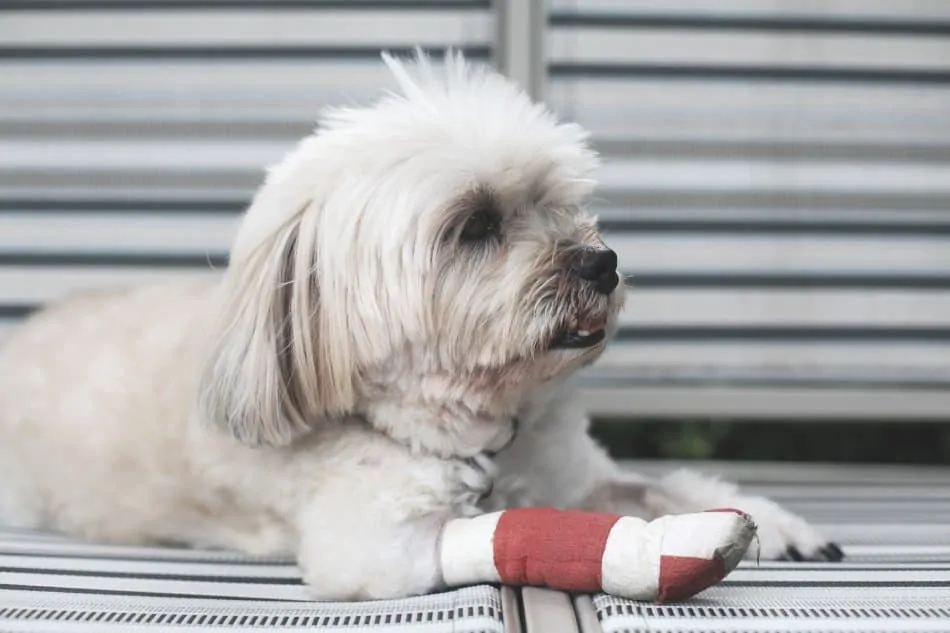
Make sure that your kit is designed for the people who will be with you.
Key Components
The essentials of every kit may change depending on your needs. If you purchase a kit that is ready to go, then you are going to need to consider what is in the kit before you take it along.
Not all kits will have the gear that you need, so it is important to take a look and make sure that the essentials are going to be there before you take it out into nature.
Always make sure to bring antiseptics, bandages, instruments, and medications that you may need.
Additional Features
All of the features that you may want your kit to have may not be simply the essentials. Many kits are designed to be more versatile, which means that they will have additional functionality that can help you as well. This can include a pocket knife, a fire starter, or a small flashlight.
A Waterproof Design
It is essential that the kit that you choose is resistant to water so that the medical supplies inside the unit do not get wet. If your kit is not waterproof, it can easily end up costing you more money because the supplies may be unusable when you need them.
What Size Kit is Going to be Best for You
This size of the kit you get will depend on your specific needs. If you are looking for a kit that you keep in your home and you live alone, you are going to need a much smaller kit than if you are married and living with three kids. Consider the size of the kit before you purchase it and the location where you are going to store it so that you can determine if it is adequate for your needs.
In general, a small kit is designed for less than 25 uses when it comes to low hazard injuries. Medium is designed for 25 to 100 uses, and a large kit will have over 100, which is why it is an excellent option for a workspace that has more than 100 employees.
If you are planning a kit for high hazard injuries, then it is going to be able to be used for a much smaller group of people. In fact, a small kit can only help less than five individuals, but a large one can still benefit more than 25 with ease.
Before you decide on the size that works for you, you are going to need to determine the types of hazards that you may encounter.
Appearance: Brightly Colored or Inconspicuous
This type of kit can be put together using any type of container, but the commercial kits that you can purchase on the market are designed to be in a durable box that is made of plastic. Sometimes, they can be assembled in a fabric pouch or a box that can be attached to the wall in a permanent location.
The International Organization for Standardization, which is also known as ISO, set the first standard for this type of kit. Their variation is a kit that is green in color with a white cross that is easy to see. This look is still a common option that you can see in many countries across the globe.

Sometimes, a kit like this is marked by an organization that sponsors it. For example, the Red Cross is an organization that typically utilizes a white box with a red cross. This is the symbol that is designated for the Red Cross, which means that it cannot be used by another organization, so it is very recognizable as their symbol. Some kits may also use the Star of Life as well. If this is used, it is typically used by emergency medical services.
All of these symbols are designed to be brightly colored so that when you are not aware of their location, you can quickly find it, especially if it is located on the wall inside of a building. You do not want the box to be inconspicuous because a kit that is difficult to see will be more difficult to find if you are stressed out trying to find the kit when someone is injured.
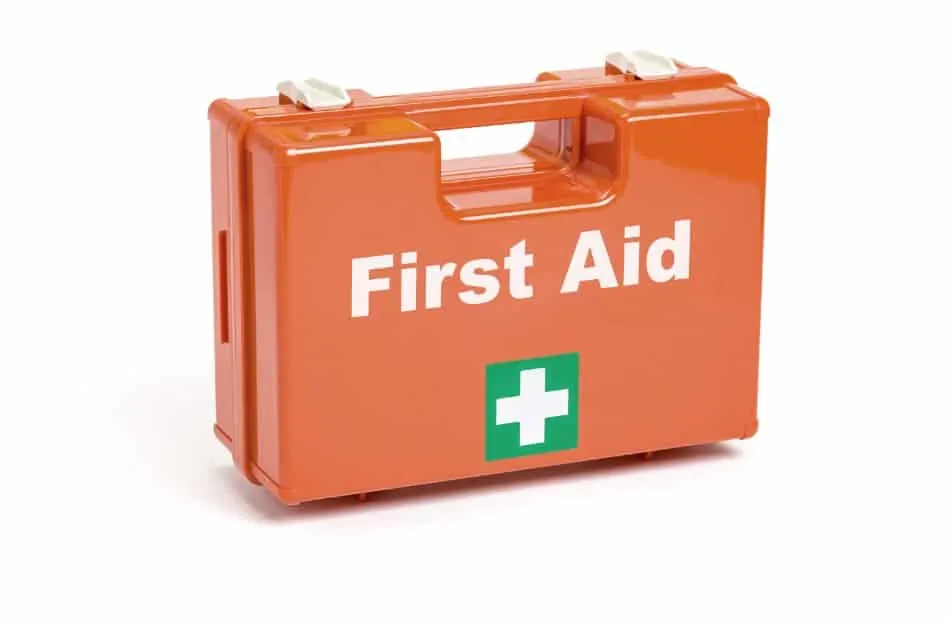
As previously stated, a brightly colored kit is going to be the best option that you can use to quickly get the care that you or others in the area need.
Types of First Aid Kits That are Available
What should be in a first aid kit? Well, that is going to depend on the type of kit that you have and where it will be used. Typically, a kit like this is classified based on their portability, and their resistance to water, impact, and corrosion.
The four types that you can consider for any location include:
Type One – This is a stationary kit that is good for an office setting or a location that is not going to receive outdoor exposure.
Type Two – This is a more portable option that may or may not have carry handles. This type will be smaller and less costly than other kits, but it works well for a small office or a home.
Type Three – This is a portable kit option that can also be mounted on a wall. It should be designed with a water-resistant seal, but it is best for indoor use or use in a sheltered area.
Type Four – This is another portable option that can be mounted. It will have a waterproof design that can be used in an outdoor environment, and it should also be able to resist corrosion and excess moisture, which will make it an ideal kit for the area near a pool.
For the Home
There are a lot of options that you can consider for your home, especially so that you can store all of your emergency medical supplies in the same area. A kit that you use at home is not limited by weight, so you will be able to add as many supplies that fit into it.
For Adults
If the kit that you have in your home is strictly for adults to use, then you will want to include things like band-aids, antibiotic ointment, pain relievers, antihistamines, and a list of emergency numbers that may be needed. You may also find a thermometer, scissors, tweezers, and Dramamine.
For Children
Kits that will be used in an area where children are around will have a lot of the same essentials as a kit that is designed for an adult, but it will also have some additional essentials that a child may need. This can include anti-itch cream for poison ivy, bug bites, and sunburn. You may also want to include supplies to secure a broken bone or a sprain.
Benadryl is a good medication to have in a kit for kits so that you can treat any allergic reactions that they may encounter. Liquid Tylenol is also a great option for younger kids who cannot swallow pills yet. Don’t forget the sunscreen and the bug spray for your little ones as well, especially if you are taking the kit on the road with you.
Wipes that you can use to clean your child’s hands should also be included in a kit that you are going to use in your home.
For Pets
If you have pets that live with you, there are going to be things that they need if a medical emergency occurs. The best way to make sure that the supplies that you need are on hand is to put together a kit for your pet.
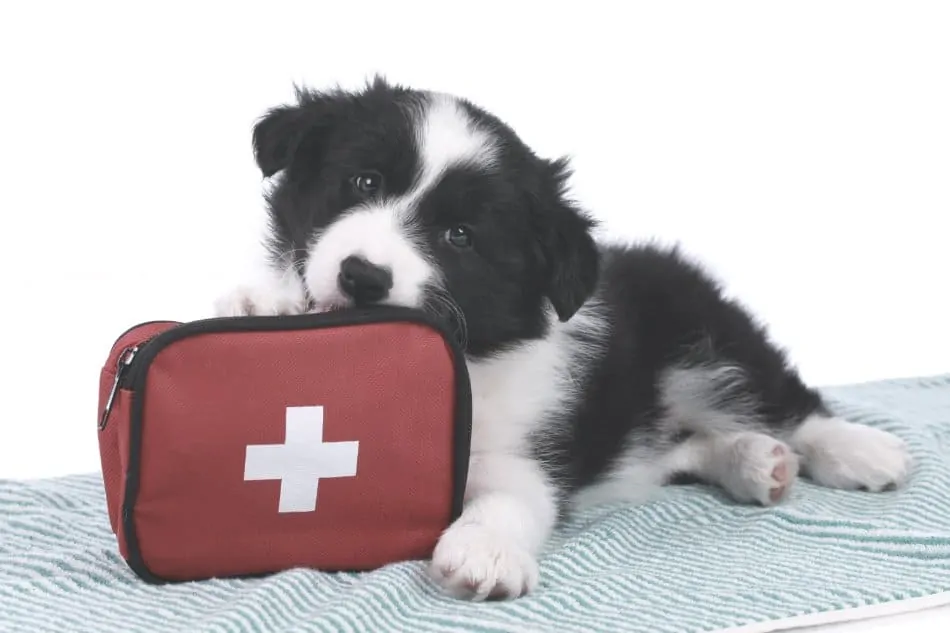
In this kit, make sure to include the number to use to contact the vet, an emergency care number, and the number for animal poison control. The kit will need gauze, peroxide, a digital pet thermometer, an eyedropper, milk of magnesia, and activated charcoal.
If your pet gets sick, you will need to have the supplies to give them some medical aid right away if they need it.
Additional items such as a spare leash, soft e-collar and a pillow case, old blanket or a soft towel can come in handy. Don’t forget that pets that are distressed and afraid can also bite so be cautious when treating an animal that may not be familiar with you.
First Aid Kit at Work
When you are supplying a place of business with a kit for first aid care, you are going to need to have different types of kits depending on the type of work environment that it is and the number of people that will need to be covered by the kit in the event of a medical or survival emergency.
In an Office
This is a low-risk work zone where there are not a lot of hazards around that can cause the workers to be injured. More common injuries like cuts, burns, and abrasions are more likely to occur in this type of environment, so you will need to provide medical supplies to deal with these minor medical injuries, especially if the office is not a very big one.
At a Building Site
Most of the kits that you will see at a building site are going to be designed to cover a broad range of injuries or illnesses. Some work sites have a high risk of injury, so when you are making up the kit, you will need to take the injury rate of the site into account. Make sure to have plenty of peroxide and alcohol to clean the wounds, bandages to wrap them up, and splints to secure a bone in case of a break. If the workspace is highly populated, having a more versatile kit may be ideal.
First Aid Kit for your Car
Having a kit for first aid in your car is very important, especially if you do a lot of camping in your car or you drive to hiking locations it could be useful to have. You may want to check out our article on the list survival gear you may need for the outdoors.
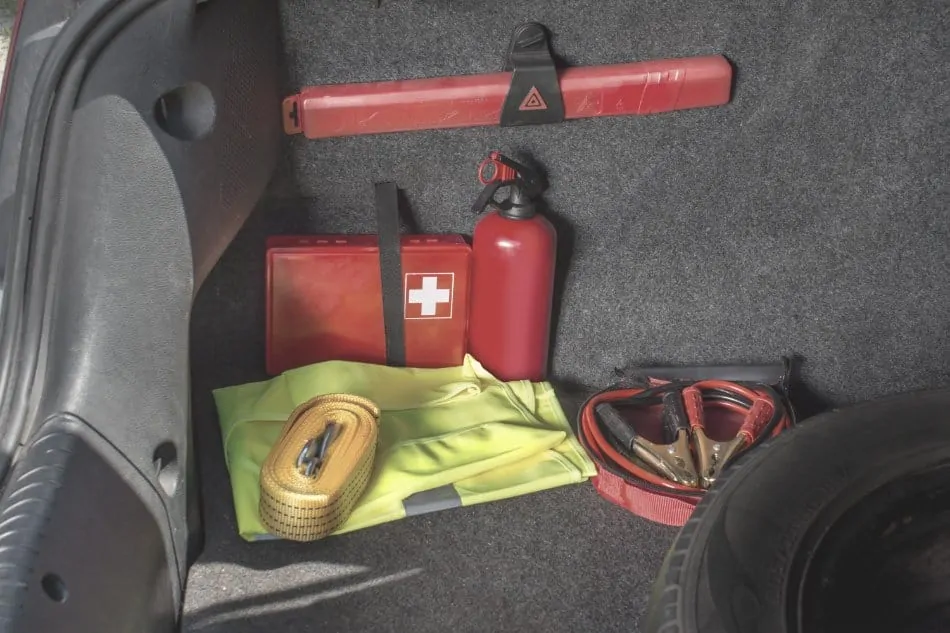
It is also great to have a car first aid kit so that you have all you need to tend to a wound right away in case you get in an accident or you end up stranded. Kits that are specifically designed for your car will have a lot of first aid options that home kits do not have. For example, a kit for your car may have a chemical ice pack that you can use to reduce the swelling if you sprain your ankle on the trail.
It will have glow sticks or a flashlight that will help you have better visibility at night. It may have a poncho to keep you protected from the rain and a sewing kit that you can use to repair your clothes if needed.
Typically, a whistle is also included so that you can get the attention of individuals out in the wilderness so that they can find you if you are injured.
EDC – Every Day Carry
This is a type of kit that is designed to give you some medical attention when there is not a hospital nearby. It is not something that will fix all of your medical issues, but it can help save your life when you need to stop the bleeding, control the pain, or prevent infection from occurring on a typical day.
These kits will have dressing, medical tape, peroxide, Aspirin, Benadryl, liquid bandages, and Neosporin.
Something to manage pain may also be required. Also, make sure to include a tourniquet in case you need to stop the bleeding of a severe wound.
For an Emergency
When an emergency happens, the best thing that you can do is be prepared for anything. Natural disasters like hurricanes, tornados, blizzards, tsunamis, and wildfires can do a lot of damage to your home.
If you are in the area where the damage occurs, you are likely to get injured as well or at least need some food and water for a few days so that you can survive. These types of kits are designed to help you survive during an emergency.
They can be filled with bandages, adhesive tape, antibiotic ointment, antiseptic wipes, a cold compress, a breathing barrier, an emergency blanket, and more.
Urban or Backcountry: What is the Difference?
When it comes to urban kits and backcountry options, these two are going to vary quite a bit. When you are hanging out in an urban environment, it is very likely that the hospital or an urgent care facility is only a few blocks away. However, a backcountry kit is likely to have more of the medical supplies that can help fight a dire situation because you are likely to be farther away from medical attention.
Even if the situation seems bad, there are going to be plenty of options that you can take to improve the situation and prevent a bad situation from getting worse.
In the wilderness, you’re going to have more primitive tools to work with when giving care to another individual. You will need to properly clean the wound so that it does not get infected during the treatment. Diarrhea and allergy medication is also essential to have in a backcountry kit because any of these illnesses can keep you from going to work when a refill is required.
The main difference between the two kits is the type of medical care that will be available in the kit to use that you can become familiar with and properly use it during the treatment process. Urban kits may not have all of the necessities as the wilderness option because things like ticks and wild animals are far less likely to be an issue.

Where Should You Store Your Emergency Kit?
Since it is nearly impossible to know where an injury will occur, it is difficult to always have your kit close by so that it can be reached quickly. For this reason, it is important to have a designated spot for your family’s kit so that you know where it will be located when you need it.
In fact, all of the family members who are living in the home should have access to the kit. They should know what is in the kit, where it is located, and the purpose of the contents of the kit. It is advisable to have first aid kits that are located in the family home in the kitchen.
It should also be stored in an area that is covered so that it does not get contaminated by dust or moisture.
Storage of a kit of this type should not be done under the kitchen or the bathroom sink either because it is a soiled environment that will easily contaminate the medical gear that is inside the kit. Any place that is dry and easy to reach should be a great option that you can consider for storage.
Remember, you are going to want the kit viable to anyone that may need it, so there is not going to be much downtime that can be used on these keys.
Environmental Factors that will Ruin the Kit
Not all environmental factors are going to give you the best results, which means that the kit that you choose and its location are going to vary quite a bit.
Because of this, you will easily be able to find a kit that you will be able to use for an extended period without it getting ruined. Some of the conditions that you should worry about when you are building your kit include:
Extreme Heat
Extreme heat is a concern that you will need to deal with, especially if the kit that you have put together is located in the sun. Extreme heat can happen easily in a car, especially if you live in an area of the country where the temperature remains fairly warm.
This type of hot temperature will not only have the possibility of making medications less effective, removing the adhesive on bandages, and separating creams and ointments that need to be kept at a certain temperature.
If heat is a factor, you can always try your best to park in the shade and cover the window with a reflective material that will block most of the sun’s rays instead of absorbing them. If it is still too hot in the car, you can either find another storage location that is not quite as hot or keep a small backpack cooler in your vehicle where you can store your kit without worrying about it.
Extreme Cold
Extreme cold can also be an issue for a kit that you are trying to keep on hand to render first aid to someone in need. Cold temperatures can freeze liquid medication so that it is unusable. Once it thaws, there is a good chance that it will not be as effective as it was designed to be.
Alcohol wipes can become dry with too much cold air, and things like a glass thermometer may even shatter in the cold.
Specific Types of Kits to Consider
There are several different types of kits that you can get that are designed to treat a specific type of injury. We already spoke about emergency kits that can be used during a natural disaster, but that will also be quite useful when it comes to survival in a search and rescue effort.
These kits hold medical supplies that you may need to use if you are injured, but they typically also have food and water rations that will be useful as well. Rescue supplies can also be present in an emergency kit, which can include things like a whistle, a flashlight, and even an emergency blanket.
Typically, this type of kit is stored in a larger duffle bag that can easily be carried, and it may have a reflective cross that makes it more visible.
Another type of kit that you may want to consider when you are looking for a kit that works for a specific need is a tactical first aid kit or travel kit for first aid. This is typically a smaller sized kit than most other options, which means that it can easily be carried or fit into your travel bag to make sure that it is convenient to reach.
They do not have the space to hold a lot of medical necessities, but it can be a source that you can use when you need to treat small cuts on the trail.
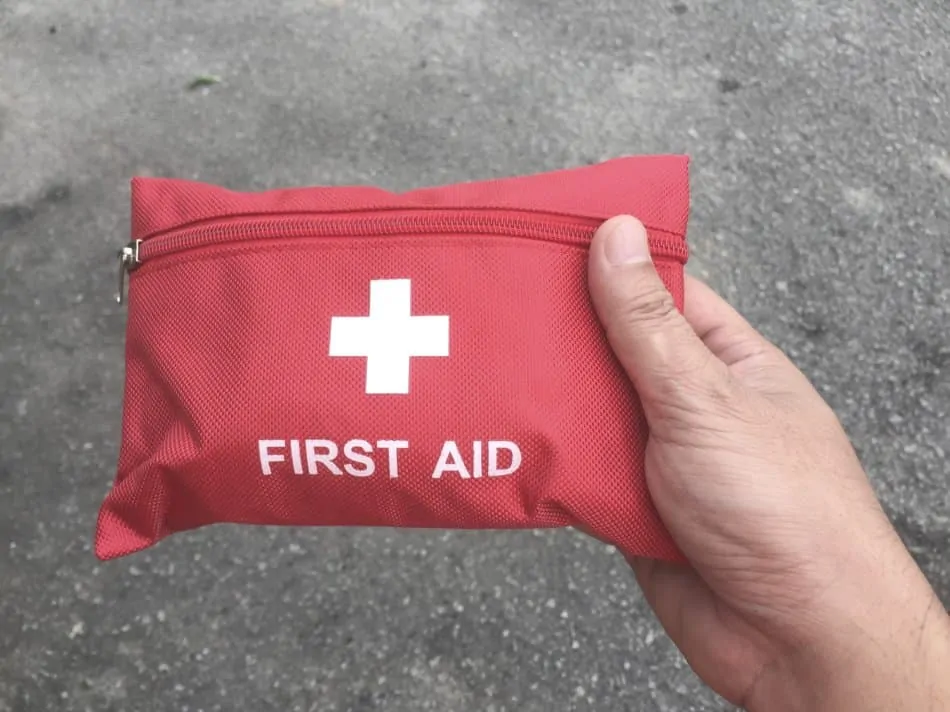
These small containers are ideal for a car or a bag, but they may not have everything that you could need when you are on the go.
The final type of kit that you may be interested in having on hand is one that is designed to provide some relief to burn victims. Burns can be extremely painful, especially without the right medicine to care for the burn. You are going to need some medication to reduce the pain as well as minimize any scarring that may occur.
You will also want the kit to have enough gauze to dress and cover the area that was burnt as well as a cool down gel that can help soothe the burned area and encourage the skin to heal.
What Type of Information Should be Included in Your Kit?
Because not everyone has had proper first aid training, there may be some individuals who are not aware of the proper way to treat basic injuries. With that being said, it is important that there are instructions in the kit that fully explain how to treat someone In certain situations.
Ideally, there should be diagrams or pictures included with the instructions to help guide the person giving the treatment. If this type of informative guide is not included in the kit already, it is important that you find information or booklets that you can print out and store in the kit that is up to date with the best medical practices to use in the given situation.
This information can also be posted on a poster near the first aid station so that it is easily visible if it is needed for care. Some of the vital information that should be in the kit include:
- Instructions on performing the Heimlich maneuver when an individual is choking. This can be a life-saving technique when it is done properly.
- Instructions on how to perform CPR. This is useful when someone is not breathing or their heart has stopped unexpectedly. This can be a way to properly resuscitate them, which will give them a better chance of survival.
- Instructions that you can use to stop severe bleeding. We all have a limited supply of blood in our bodies, so the faster you are able to control the bleeding, the less blood they may need when they can actually get medical attention at the hospital.
- Instructions on how to immobilize a broken limb. The more you move your arm that is broken before getting to the hospital, the less likely it is going to heal properly. Immobilizing it properly is one of the best ways for it to heal correctly, especially if you have the limb positioned appropriately.
- Instructions on how to treat an individual with an insect sting or an animal bite. Different bites and stings will need to be treated in different ways, so if you list some of the treatment options for the most common incidents that can happen, anyone should be able to follow it.
- First aid kit list of the supplies that you need to have in the kit should also be included so that it can be looked at when the proper type of care that’s needed might be unknown. You can describe the different bandages and medical gear so that the person giving the care will have a better idea of what is needed from them.
- First aid kit list of important numbers to contact if it’s needed. These emergency number may not be something that you call a lot, but this can be important to have in case the person with the injury needs more medical attention than you can give them.
Best Practice Guidance and Tips to Follow
When you are making a large first aid kit that you will be using to treat people with medical supplies, there are a few tips that can help you keep track of what you need to do.
If you want to make sure that it is up to par with what you will need the kit to have below are some suggestions on what to do:
Label Everything
Even if you know the medical supplies that you put into the kit, chances are that everyone who uses it will not. To help make the items more accessible, you can simply label everything that you put in the kit and give it a short explanation of what it can be used for.
Keep an Inventory
The most important thing to do with a kit of this type is to make sure that it is restocked when medicine or equipment is used from it. Any time something is used, write it down so that you can keep track of the kit easily without needing to count all of the supplies that need to be replenished.
Check the Expiration Dates
Medication can expire, so if you have pain pills or diarrhea medication in the kit, you will have to replace it from time to time if it’s not used.
Cycle the Contents
If something is in the kit that you also use in your home, you can pull the older medication form the kit so that it gets used before it expires.
Typical Contents Checklist
You can change the items that you have inside your kit, but some of the common ones that almost every kit should include are:
- Adhesive bandages of various sizes
- Liquid bandages
- Gauze pads
- Adhesive tape
- Antiseptic wipes
- Antibiotic ointment
- Calamine lotion for bug bites
- A cold compress
- Alcohol wipes
- Peroxide
- A sterile saline solution
- Hand Santizer
- Sunscreen
- Sunburn relief
- Insect repellant
- Cotton balls
- Ace bandage
- A thermometer
- Scissors
- Tweezers
- A small needle
- Pain relievers
- Antacid medication
- Nausea medication
- Diarrhea medication
- Mild laxatives
- Antihistamines
- Cough medication
- Instruction booklet
- Emergency contact information
Specialist Contents Checklist
If you are preparing a kit for a trip or a specific outdoor activity, there may be items in addition to the checklist above that you will want to include. These may not always be required, but if you have a kit large enough, you should include:
- A flashlight
- Batteries
- Waterproof matches
- A blanket
- A splint in case of a bone break
- A tourniquet to stop the bleeding
- A breathing barrier
- A blood pressure monitor
- Duct tape
- Resuscitation equipment
First Aid Backpack
These are a great tool that you can easily carry on your back, which makes them great to take with you hiking, camping, or on other outdoor excursions.
They are a larger size than some of the kits that you may see on the wall, so it will give you a portable option that can care for a lot of people. Typically, a bag like this is going to be red with white writing or a cross.
Since a backpack can hold quite a bit, it is a great tool to have for school trips or day camp where there will be a lot of children.
EMS/EMT Backpack
This type of backpack is designed to handle an emergency, so there are essentials in the bag that you may not find in other kits. For example, an EMS professional may carry oxygen, oral glucose, activated charcoal, and medications to control an overdose.
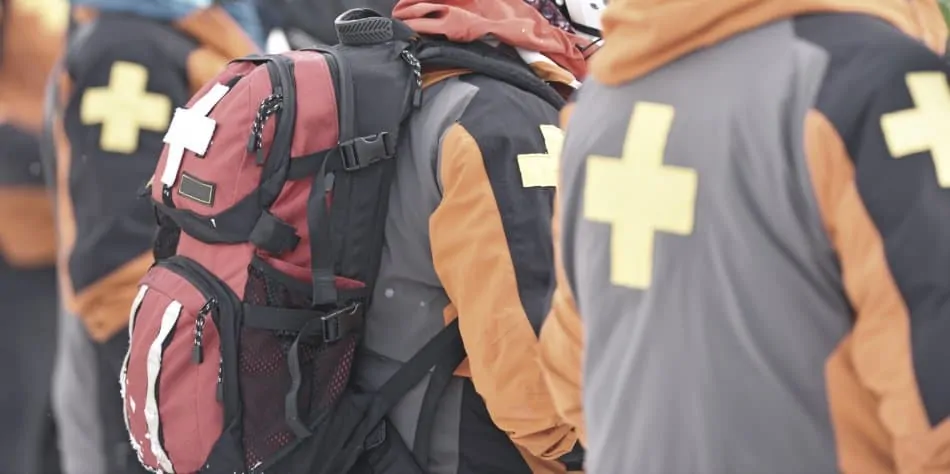
The bag should be brightly colored so that it is easy to see and durable so that it does not tear easily. The backpack is likely to be heavy, so a backpack design is very ergonomic and simple to carry.
Final Thoughts
Hopefully, this guide has helped you realize what should be in the best first aid kit as well as give you a better idea of how to pack adventure medical kits or a simple kit that you can keep at home.
If you are still unsure about why one of these kits is useful, take another look at our guide so that you can make a kit that can take care of all of your needs.
Remember, that if you are unable to make your own kit, there are plenty of pharmacies and providers in your area where you can simply purchase a kit to keep on-hand.
I’m Nebojša, a seasoned digital marketing professional with over 15 years of experience. My writing covers a diverse range of topics, from technology and gaming to app development and automobiles, all while delving into the intricacies of SEO optimization. Beyond the digital realm, I find solace in nature, inherited from my father’s love for the outdoors. His passion for hunting has influenced me, adding another layer to my appreciation for the natural world.